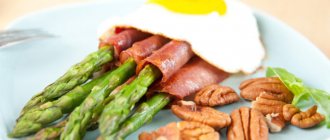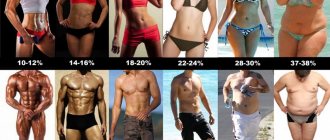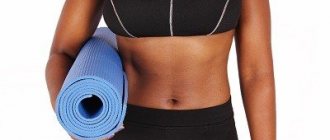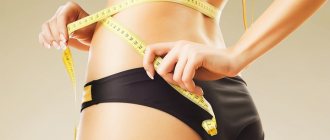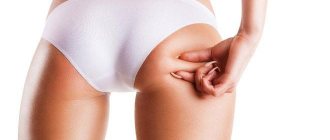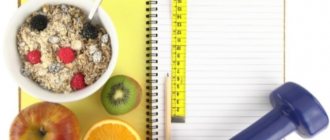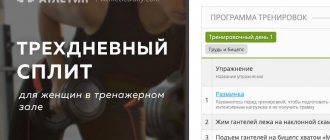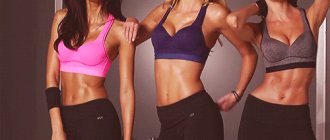There are many sweet tooths among bodybuilders. They love to eat cakes, sweets, sweet fruits and other foods, which, unfortunately, contribute to the accumulation of subcutaneous fat. This feature makes this category of products prohibited during the drying period. Otherwise, you won’t be able to get rid of the fat layer under the skin and increase muscle definition. Not everyone can withstand such a ban. To avoid relapse, most bodybuilders prefer to simply snack on bananas occasionally.
Drying bananas perfectly help replenish energy losses in the morning, as well as after intense training. The number of calories in one average banana is about 90 kilocalories, of which 0.5 g are fats, 1.5 g are proteins, 20 g are carbohydrates. The main advantage of this fruit over other sweets is that it contains a lot of plant fiber and vitamins. Bananas do not cause an allergic reaction, so they can be consumed in much larger quantities than other sweets.
General rules
The term “drying” is quite common in the vocabulary of professional bodybuilding/fitness athletes.
The essence of this process is to burn the subcutaneous fat layer while maintaining muscle mass, which allows you to achieve a pronounced muscle relief. That is, the purpose of drying is to “drawing” the muscle relief, so a special nutrition and training system has been developed for a bodybuilder to burn fat. As a rule, this stage of preparation is carried out after gaining muscle mass, the process of which is accompanied by a gain of subcutaneous fat. The main principle of nutrition for a bodybuilder when losing fat is to reduce the glycogen in muscle tissue and switch metabolism to burning fat, which is achieved by switching to a special diet and a certain lifestyle (breaks between meals, rest, sleep duration). At the same time, the diet for drying varies depending on gender and is selected individually.
It should be noted right away that “cutting” nutrition is not an analogue of weight loss diets, since many people who want to dry out the body mean by this process weight loss. This is a completely different program for working on your body, although it is accompanied by weight loss. The main difference is that weight loss diets are aimed at reducing body volume by reducing muscle mass and fatty tissue, and when cutting, at reducing the subcutaneous fat layer, while it is necessary to preserve lean muscle mass.
It is due to this that its drawing is achieved. Accordingly, it is necessary to move on to drying the body only after solving the problem of excess weight. Also, an important condition for cutting is the presence of already built-up muscle mass, since the main task of drying is to outline the already pumped up muscles, removing subcutaneous fat. Otherwise (if you have insufficient muscle mass), drying out your body can lead to exhaustion/exhaustion, and instead of a beautiful, sculpted body, you will get flabby muscles and saggy skin.
One of the indicators of the need to dry the body is the fat content in the body. There are various methods for determining fat content, they are not complicated, and they are described on various web resources. It is difficult to talk about exact generalized figures for the norm of fat content in the body, since this indicator is quite individual, but there is a certain range, which is accepted as the norm:
- Men: age 30 years – 13-18%, 30-50 years – 14-20%, 50 years and older – 16-22%.
- Women: age up to 30 years – 15-20%, 30-50 years – 19-25%, 50 years and older 20-27%.
It is important to know to what level you need to reduce fat content. A guide for men can be:
- 3-7% – super-athletic figure (for bodybuilders);
- 10-12% – normal athletic figure;
- 15-18% – athletic fit.
For women:
- 13-15% – slender “model” figure;
- 16-22% – “standard” slim figure.
On average, if you are not a professional athlete, body fat should not be lower than 13-15% for women and 5-9% for men, otherwise various functions may be impaired. This is especially important for women whose fat deficiency can lead to menstrual irregularities and changes in hormonal levels.
The diet for drying the body is based on:
- daily calorie deficit (the ratio of energy intake and energy expenditure, including basal metabolic rate + physical activity);
- maintaining a high metabolic rate.
There are various nutritional systems for drying the body. For people who are not professional athletes, the best option is the method of stepwise (gradual) reduction in calorie intake. The recommended calorie deficit is 10-20% of the daily intake, which should be achieved by excluding easily digestible carbohydrates (foods with a high glycemic index ) and, to a lesser extent, fats from the diet. With a constant deficiency of carbohydrates in the diet, the body begins to gradually switch to burning subcutaneous fat.
The rate of reduction in caloric intake also depends on the specified rate of fat burning. Normally, body weight loss should not exceed 1 kg/week. Otherwise, there is a risk of turning on the body’s self-defense mechanism, in which fat will begin to be deposited. Therefore, the drying process must occur under constant monitoring of fat levels and body weight. It is important not to strive for a sharp restriction of caloric intake, but to carry out the reduction process smoothly, since it is proper nutrition during drying - a gradual reduction in caloric intake that contributes to greater loss of fat and, in a much smaller proportion, muscle mass.
The overall ratio of dietary nutrients in the diet should be approximately 50-60% protein, 10-20% fat and 30-40% carbohydrates. As for the quantitative content of carbohydrates in the diet, this indicator is determined individually depending on the athlete’s body weight and physical level. activity. Their amount can vary between 120-200 g/day, but they should be reduced gradually to a level of 1.5 g/1 kg of body weight.
Fats should be present in the diet to a minimum, but not less than 40 g/day. The approximate fat content in the diet can be determined by multiplying 0.5 g by body weight. Preference is given to high-quality vegetable fats; solid animal fats are excluded. Controlling carbohydrate intake is especially important when cutting, because if during any period of drying your body weight stops decreasing, you should reduce the amount of carbohydrates in your diet.
When drying and working on relief, the diet should be dominated by natural products and low-fat foods. The carbohydrate component is represented by complex carbohydrates (pasta made from rye flour, buckwheat, brown rice, non-starchy vegetables, sour fruits), which will provide the body with energy.
It is recommended to consume complex carbohydrates in the first half of the day. One of the common mistakes of non-professional athletes is the formation of a diet with the complete exclusion of fats and carbohydrates, which in principle is unacceptable and even dangerous to health due to the high risk of developing ketoacidosis , as well as an increase in the load on the kidneys due to the consumption of proteins in large quantities.
The protein component is represented by complete animal proteins - lean meat (beef, chicken fillet, turkey, rabbit meat), fish, seafood, eggs, dairy/fermented milk products with a low fat content (yogurt, milk, cottage cheese, kefir). The protein content in the diet can range from 1.5 to 3.0 g/kg body weight.
Maintaining a high metabolic rate is achieved through frequent split meals (5-7 times a day). And the higher the metabolism, the faster the loss of subcutaneous fat occurs. Hot peppers, green tea and water also help increase metabolism.
To enhance metabolism and remove waste and toxins from the body, it is important to drink enough water (3-4 liters/day), including during/after training. During drying, harmful foods are removed from the diet - ketchups, mayonnaise, smoked meats, fatty meat and fish, fast food products (crackers, chips), canned food, carbonated drinks, pickles, marinades, sugar, preserves, jams, candies, ice cream, honey, sweet fruits (bananas, grapes, persimmons, pears, peaches, apricots), pastries, cakes, dough products, dried fruits, starchy vegetables (potatoes, eggplants, corn) and all alcohol-containing drinks, as they inhibit the fat burning process.
Among the methods of culinary processing of products, boiling, steaming, baking and stewing are recommended, which allow preserving the beneficial properties of the products. Frying is completely excluded, since the use of fat increases the calorie content of the diet. It is preferable to eat greens and vegetables fresh.
For more advanced athletes, the carbohydrate alternation method can be recommended. The essence of the method is a combination of days with a diet containing a low carbohydrate component and days with a high carbohydrate content, which alternate according to various schemes. An example of a classic alternation: 2 + 1, in which the first 2 days are a diet with a low carbohydrate content, and the 1st day is a diet with a high carbohydrate content.
Or 3+1; 4+2 and so on. The basis of this dietary pattern is to reduce the risk of the body adapting to a decrease in carbohydrates and the energy value of the diet and preventing the activation of a defense mechanism that blocks the fat burning process. At the same time, muscle proteins may be involved in the metabolic .
On low-carbohydrate days of the cycle, carbohydrate intake is about 1.0 g/kg of weight, and protein - 2.5-3.0 g/kg of weight, while on high-carbohydrate days, the carbohydrate content in the diet increases to 4-6 g/kg weight, but the amount of protein is reduced to 1-1.5 g/kg. Often, at the end of the mini cycle, a day with moderate consumption of carbohydrates (2-3 g) and proteins is practiced - 2-2.5 g / kg of weight. At the same time, despite the fact that the weight loss schedule on a carbohydrate alternation diet is uneven, this drying method is an effective and fairly safe option.
Despite the general principles of the body drying process and the commonality of techniques, there are a number of drying features for men and women. A diet for drying the body for girls is based on the characteristics of the female body: first of all, in women, a lower basal metabolism, the transfer of excess carbohydrates into fat deposits occurs much faster, stored fat is spent more intensively for energy needs, disproportionate distribution of muscles and fat throughout the body, When drying, fat is removed first from the face, arms and chest, and from the legs and buttocks - last.
Accordingly, cutting meals for girls should contain less protein, since muscle mass in women is significantly lower than in men. With certain drying schemes, there is no need to allow strict restrictions/complete exclusion of any food nutrients from the diet. For women, a balanced diet is more important, since there is a risk of imbalance of hormonal levels and the menstrual cycle.
Many girls forget that a diet for relief is indicated only for women who have sufficiently developed muscles and are absolutely healthy. At high risk are girls with a body weight of less than 52 kg, especially those who lose weight intensively, girls under 25 years old with a fat reserve of less than 13%.
Therefore, the diet menu for drying the body for girls must include omega-3 , olive/linseed oil for salad dressing, nuts and fish daily (fish oil). An equally important problem for women during the drying period is cellulite, which often occurs during sudden weight loss. To prevent this phenomenon, it is recommended to use manual/hardware massage and wraps. For women during the drying period, a carbohydrate alternation diet is more preferable, which allows you to neutralize the negative expectation of feeling hungry.
A cutting diet for men should be aimed primarily at preserving muscle mass and include: proteins approximately 2/3 of the diet, carbohydrates - 1/3, fats - no more than 10%. If you have a congenital high metabolism, you can consume small amounts of sweets in the first half of the day. As a rule, a sports diet for drying the body of men involves enriching the diet with specialized nutritional supplements: protein , amino acids , fat burners, vitamins , glutamine .
Cutting nutrition for men involves split meals - at least 5-6 times a day, in portions of no more than 250 g. At the same time, the nutrition menu should be structured so that breakfast and second breakfast are the most high-calorie. The last meal should be carbohydrate-free, and the penultimate meal should contain a minimum of carbohydrates. Body drying for men usually takes longer, is divided into several stages and takes up to 1.5 months.
As a rule, body drying for professional athletes is carried out under the strict supervision of an experienced trainer, in several stages, using sports nutrition (anabolics, fat burners), which allows them to reduce the content of subcutaneous fat to a minimum, maximally “exposing” the muscle corset at the time of competition (1 -2 times per year). It is impossible to achieve similar results on your own at home without the guidance of a highly qualified trainer.
Accordingly, the diet for drying the body at home may be less strict. It is important to learn how to determine the calorie content of your daily diet using tables of calorie content of foods and the level of your energy expenditure, which will allow you to slowly reduce the calorie content of your diet and control the amount of carbohydrates consumed. The training plan does not fundamentally change, but its intensity decreases. When drying at home, you need to properly balance your diet so that the body receives the required minimum of carbohydrates and fats, avoiding starvation.
Drying the body at home is often accompanied by some dietary mistakes, the main of which are:
- undereating/overeating;
- complete refusal of salt;
- uneven distribution of food throughout the day (refusal of breakfast, consumption of carbohydrates in the afternoon);
- complete exclusion of carbohydrates/fats from the diet;
- a sharp restriction of caloric intake, which violates the basic principle of consistent reduction in caloric intake;
- insufficient fluid intake.
Also, we should not forget that even at home it is necessary to periodically adjust your diet: if weight is lost too quickly, increase the calorie intake; if weight loss progress is weak, reduce the calorie intake. Everyone decides whether or not to use special sports nutrition supplements when training at home (protein shakes, amino acids, fat burners), but to balance micronutrients in the diet, it is recommended to use vitamin and mineral supplements ( Vitrum , Vitamax , Multitabs , Complevit , Unicap ) and preparations with Omega-3 .
An extremely important point at the stage of drying the body is the correct entry and exit from the diet. It is correct to practice preliminary preparation of the body for drying, including a gradual restriction of high-calorie foods and sweets 1-2 weeks before it begins. Exiting the body drying regime should also be slow, with a gradual return to your usual foods in your diet. It is a gradual return to the usual diet that allows you to maintain the effect of drying the body for a long time.
Drying the body for girls: basic rules
“Professional” fat burning is a serious and responsible process, including a set of mandatory measures. Athletes have strong motivation and a mindset for success (usually they are “dry” on the eve of competitions), but will an unprepared person have enough strength? What do we have to do?
- Follow a protein diet. You cannot eat “light” carbohydrates (flour, desserts); the menu is based on foods high in protein. Only complex carbohydrates are allowed, which take a long time to digest and are found in vegetables, fruits and some cereals. In carbohydrate deficiency mode, the body has to obtain the missing energy by breaking down its own fats.
- Exercise. Physical activity allows the body to quickly use up fat reserves and grind out those same “cubes” on the stomach.
- Take vitamins. The diet is supplemented with vitamins, amino acid and mineral complexes, tablets to speed up metabolism, and protein shakes.
How to prepare
Before you start losing weight using this method and increasing the load on your body, undergo a medical examination. Consult a therapist, nutritionist, trainer. Experts will tell you whether your health allows such experiments and advise you on how to properly dry your body - professional consultation is especially important for girls who have not given birth, since excessive stress can affect fertility. If the doctor gives the go-ahead, you need to take care of the following things in advance.
- Meal plan. More than 70% of success depends on proper diet planning during a diet. Plan your menu in advance.
- Schedule. Review your regimen, because the body drying program for girls consists of a set of physical exercises that are performed for 45-50 minutes four to five times a week. They need to be properly alternated with meals.
- Scales. They will be needed to monitor the “plumb lines” (in the morning once every three days).
- Sport equipment. If it is not possible to go to the gym or buy sports equipment, then some elements can be replaced with improvised means. Instead of expensive exercise equipment, you can get by with a jump rope, and instead of dumbbells - with plastic bottles filled with water.
Authorized Products
The diet for drying the body includes:
- Protein products - lean red meats (beef/veal), rabbit and poultry (chicken, turkey), seafood, low-fat cottage cheese, soy products, fish (cod, hake, pike, perch, flounder, trout, salmon), chicken eggs soft-boiled, low-fat cheese, kefir.
- Fats - fish oil, virgin vegetable oils, walnuts, flax seed.
- Carbohydrates - porridge from whole grain cereals (buckwheat, barley/oatmeal, brown rice), vegetables (olives, carrots, cabbage, tomatoes, garden herbs, zucchini, eggplant, cucumbers, green salad leaves, onions, green beans), unsweetened fruits ( in the morning), grain breads.
- Free liquid - green tea, rosehip decoction, mineral water, herbal teas.
Table of permitted products
| Proteins, g | Fats, g | Carbohydrates, g | Calories, kcal | |
Vegetables and greens | ||||
| eggplant | 1,2 | 0,1 | 4,5 | 24 |
| peas | 6,0 | 0,0 | 9,0 | 60 |
| green peas | 5,0 | 0,2 | 13,8 | 73 |
| zucchini | 0,6 | 0,3 | 4,6 | 24 |
| cabbage | 1,8 | 0,1 | 4,7 | 27 |
| broccoli | 3,0 | 0,4 | 5,2 | 28 |
| carrot | 1,3 | 0,1 | 6,9 | 32 |
| cucumbers | 0,8 | 0,1 | 2,8 | 15 |
| olives | 0,8 | 10,7 | 6,3 | 115 |
| iceberg lettuce | 0,9 | 0,1 | 1,8 | 14 |
| tomatoes | 0,6 | 0,2 | 4,2 | 20 |
| beans | 7,8 | 0,5 | 21,5 | 123 |
| green beans | 2,8 | 0,4 | 8,4 | 47 |
| lentils | 24,0 | 1,5 | 42,7 | 284 |
Nuts and dried fruits | ||||
| nuts | 15,0 | 40,0 | 20,0 | 500 |
| flax seeds | 18,3 | 42,2 | 28,9 | 534 |
Cereals and porridges | ||||
| buckwheat | 4,5 | 2,3 | 25,0 | 132 |
| oatmeal | 3,2 | 4,1 | 14,2 | 102 |
| millet porridge | 4,7 | 1,1 | 26,1 | 135 |
| brown rice | 7,4 | 1,8 | 72,9 | 337 |
Flour and pasta | ||||
| pasta | 10,4 | 1,1 | 69,7 | 337 |
Bakery products | ||||
| whole grain bread | 10,1 | 2,3 | 57,1 | 295 |
Dairy | ||||
| Ryazhenka | 2,8 | 4,0 | 4,2 | 67 |
| natural yogurt 2% | 4,3 | 2,0 | 6,2 | 60 |
Cheeses and cottage cheese | ||||
| cottage cheese | 17,2 | 5,0 | 1,8 | 121 |
| cottage cheese 0.6% (low fat) | 18,0 | 0,6 | 1,8 | 88 |
| curd tofu | 8,1 | 4,2 | 0,6 | 73 |
Meat products | ||||
| boiled beef | 25,8 | 16,8 | 0,0 | 254 |
| veal | 19,7 | 1,2 | 0,0 | 90 |
| rabbit | 21,0 | 8,0 | 0,0 | 156 |
Sausages | ||||
| sausages | 10,1 | 31,6 | 1,9 | 332 |
| sausages | 12,3 | 25,3 | 0,0 | 277 |
Bird | ||||
| boiled chicken breast | 29,8 | 1,8 | 0,5 | 137 |
| turkey | 19,2 | 0,7 | 0,0 | 84 |
Eggs | ||||
| soft-boiled chicken eggs | 12,8 | 11,6 | 0,8 | 159 |
Fish and seafood | ||||
| pink salmon | 20,5 | 6,5 | 0,0 | 142 |
| seafood | 15,5 | 1,0 | 0,1 | 85 |
| herring | 16,3 | 10,7 | — | 161 |
Oils and fats | ||||
| linseed oil | 0,0 | 99,8 | 0,0 | 898 |
| olive oil | 0,0 | 99,8 | 0,0 | 898 |
| sunflower oil | 0,0 | 99,9 | 0,0 | 899 |
Non-alcoholic drinks | ||||
| mineral water | 0,0 | 0,0 | 0,0 | — |
| green tea | 0,0 | 0,0 | 0,0 | — |
| * data is per 100 g of product | ||||
Menu for the week
A diet for drying the body should last at least one month, since safe drying is slow and gradual without stress on the body. Below is an example of an approximate menu for a week for losing weight at home. The menu is designed for six meals per day.
Monday: 1 – two hundred and fifty grams of cottage cheese, banana, orange; 2- two hundred and fifty grams of boiled chicken meat, rice porridge and tomato; 3 – boiled veal (100 g), five egg whites, boiled potatoes (10 g); 4 – boiled chicken (200 g), boiled rice (60 g), vegetable salad with olive oil; 5 – boiled veal (100 g), two hundred milliliters of orange juice; 6- protein shake.
Tuesday-Wednesday: 1 – six egg whites, low-fat cottage cheese (100 g), grapefruit; 2 – boiled fish (150), rice boiled in water (100), white cabbage (100); 3 – boiled fish (100), one tomato, two lemon slices; 4 – eight egg whites, medium-sized grapefruit, low-fat yogurt (100); 5 – steamed fish (150), vegetable salad with olive oil; 6 – protein shake or fruit salad.
Thursday: 1 – protein omelet (three whites), one glass of herbal or green tea with sugar; 2 – boiled chicken meat (150), two soft-boiled eggs, boiled rice (120), one apple; 3 – boiled fish (100), cauliflower or broccoli (150), orange; 4 – low-fat cottage cheese (200), one medium-sized banana; 5 – a handful of walnuts, a handful of almonds, a handful of pumpkin seeds; 6 – protein shake.
Best materials of the month
- Why you can't go on a diet on your own
- How to keep vegetables and fruits fresh: simple tricks
- How to curb your sweet cravings: 7 unexpected products
- Scientists say youth can be extended
Friday-Saturday: 1 – oatmeal with skim milk and a glass of fresh orange juice; 2 – boiled chicken breast (150), buckwheat porridge boiled in water (100), one tomato; 3 – protein shake; 4 – boiled chicken (150) and vegetable salad with lemon juice; 5 – cottage cheese with a minimum percentage of fat content (400); 6 – pumpkin seeds – a handful.
Sunday: repeat Monday's diet.
It is recommended that a drying diet for men be prepared for a month by a trainer or nutritionist, taking into account such contraindications as diseases of the gastrointestinal tract, kidneys, liver, cardiovascular system, low or high blood pressure, and disruptions in the functioning of the central nervous system.
And remember, a diet by itself will not show decent results; you need to adhere to the complex: intensity and regularity of training, proper rest and proper nutrition.
More fresh and relevant information about health on our Telegram channel. Subscribe: https://t.me/foodandhealthru
We will be grateful if you use the buttons:
Fully or partially limited products
A diet for drying the body excludes:
- Products containing easily digestible carbohydrates (sweets, dried fruits, sugar, honey, condensed milk, chocolate, jam, cookies, halva), sweet desserts, cakes, gingerbreads, ice cream.
- Potatoes in any form, wheat bread, pastries, cereals made from crushed grains.
- Fast food products, fatty meats, meat products (sausages, smoked meats, lard, bacon), fatty dairy/fermented milk products.
- Sweet fruits and juices from them (watermelon, melon, grapes, persimmon, banana, pineapple).
- Drinks containing caffeine and carbon dioxide, alcoholic beverages.
Table of prohibited products
| Proteins, g | Fats, g | Carbohydrates, g | Calories, kcal | |
Vegetables and greens | ||||
| fried potato | 2,8 | 9,5 | 23,4 | 192 |
| radish | 1,2 | 0,1 | 3,4 | 19 |
| turnip | 1,5 | 0,1 | 6,2 | 30 |
| beet | 1,5 | 0,1 | 8,8 | 40 |
Fruits | ||||
| figs | 0,7 | 0,2 | 13,7 | 49 |
Berries | ||||
| grape | 0,6 | 0,2 | 16,8 | 65 |
Mushrooms | ||||
| mushrooms | 3,5 | 2,0 | 2,5 | 30 |
Nuts and dried fruits | ||||
| raisin | 2,9 | 0,6 | 66,0 | 264 |
| dates | 2,5 | 0,5 | 69,2 | 274 |
Cereals and porridges | ||||
| corn grits | 8,3 | 1,2 | 75,0 | 337 |
| white rice | 6,7 | 0,7 | 78,9 | 344 |
Flour and pasta | ||||
| pancakes | 6,1 | 12,3 | 26,0 | 233 |
| vareniki | 7,6 | 2,3 | 18,7 | 155 |
| dumplings | 11,9 | 12,4 | 29,0 | 275 |
Bakery products | ||||
| buns | 7,2 | 6,2 | 51,0 | 317 |
| wheat bread | 8,1 | 1,0 | 48,8 | 242 |
Confectionery | ||||
| jam | 0,3 | 0,2 | 63,0 | 263 |
| jam | 0,3 | 0,1 | 56,0 | 238 |
| candies | 4,3 | 19,8 | 67,5 | 453 |
| cake | 3,8 | 22,6 | 47,0 | 397 |
| jam | 0,4 | 0,2 | 58,6 | 233 |
| halva | 11,6 | 29,7 | 54,0 | 523 |
Cakes | ||||
| cake | 4,4 | 23,4 | 45,2 | 407 |
Chocolate | ||||
| chocolate | 5,4 | 35,3 | 56,5 | 544 |
Raw materials and seasonings | ||||
| ketchup | 1,8 | 1,0 | 22,2 | 93 |
| mayonnaise | 2,4 | 67,0 | 3,9 | 627 |
| honey | 0,8 | 0,0 | 81,5 | 329 |
| sugar | 0,0 | 0,0 | 99,7 | 398 |
Dairy | ||||
| milk 3.2% | 2,9 | 3,2 | 4,7 | 59 |
| condensed milk | 7,2 | 8,5 | 56,0 | 320 |
| cream | 2,8 | 20,0 | 3,7 | 205 |
| cream 20% (medium fat content) | 2,8 | 20,0 | 3,7 | 205 |
| sour cream 25% (classic) | 2,6 | 25,0 | 2,5 | 248 |
| Ryazhenka 6% | 5,0 | 6,0 | 4,1 | 84 |
| fruit yogurt 3.2% | 5,0 | 3,2 | 8,5 | 85 |
Meat products | ||||
| fatty pork | 11,4 | 49,3 | 0,0 | 489 |
| salo | 2,4 | 89,0 | 0,0 | 797 |
| bacon | 23,0 | 45,0 | 0,0 | 500 |
| raw smoked pork loin | 10,5 | 47,2 | — | 467 |
| pork cutlets | 13,6 | 45,7 | 8,8 | 466 |
Sausages | ||||
| smoked sausage | 28,2 | 27,5 | 0,0 | 360 |
| dry-cured sausage | 24,1 | 38,3 | 1,0 | 455 |
Bird | ||||
| duck | 16,5 | 61,2 | 0,0 | 346 |
| goose | 16,1 | 33,3 | 0,0 | 364 |
Fish and seafood | ||||
| fried fish | 19,5 | 11,7 | 6,2 | 206 |
| smoked fish | 26,8 | 9,9 | 0,0 | 196 |
| canned fish | 17,5 | 2,0 | 0,0 | 88 |
| sprats | 17,4 | 32,4 | 0,4 | 363 |
Alcoholic drinks | ||||
| white dessert wine 16% | 0,5 | 0,0 | 16,0 | 153 |
| vodka | 0,0 | 0,0 | 0,1 | 235 |
| cognac | 0,0 | 0,0 | 0,1 | 239 |
| liquor | 0,3 | 1,1 | 17,2 | 242 |
| beer | 0,3 | 0,0 | 4,6 | 42 |
Non-alcoholic drinks | ||||
| bread kvass | 0,2 | 0,0 | 5,2 | 27 |
| cola | 0,0 | 0,0 | 10,4 | 42 |
| coffee with milk and sugar | 0,7 | 1,0 | 11,2 | 58 |
| Pepsi | 0,0 | 0,0 | 8,7 | 38 |
| energy drink | 0,0 | 0,0 | 11,3 | 45 |
Juices and compotes | ||||
| compote | 0,5 | 0,0 | 19,5 | 81 |
| grape juice | 0,3 | 0,0 | 14,0 | 54 |
| * data is per 100 g of product | ||||
Menu options for losing excess weight
For the first and last weeks of losing weight, the diet is certainly more varied than the rest of the time. An approximate menu for this period is scheduled by day. It is not necessary to follow their strict order, the main thing is to adhere to all the rules of the diet.
First day:
- breakfast: oatmeal with water, 2 egg whites, tea without sugar;
- snack: a glass of kefir or fermented baked milk;
- lunch: chicken breast, cucumber and cabbage salad;
- snack: a portion of buckwheat porridge without butter;
- dinner: baked fish with stewed cabbage.
Second day:
- a glass of low-fat milk, egg white omelette;
- snack: a serving of yogurt;
- lunch: boiled beef, bell pepper and cucumber salad with olive oil;
- snack: boiled fish fillet, stewed asparagus;
- dinner: cottage cheese, a glass of kefir.
The third day:
- breakfast: buckwheat porridge with water, 1 protein;
- snack: a handful of walnuts;
- lunch: fish soup with a piece of fish and vegetables (no potatoes), cucumber and tomato salad;
- snack: cottage cheese, 2 pcs. dried apricots;
- dinner: boiled fish, cabbage salad with herbs.
Fourth day:
- breakfast: oatmeal with water, green tea:
- snack: a glass of fermented baked milk;
- lunch: bell pepper salad, stewed squid;
- snack: cauliflower soup;
- dinner: cottage cheese, a glass of kefir.
Fifth day:
- breakfast: 2 egg white omelette with tomato, tea;
- snack: a serving of yogurt;
- lunch: cream of mushroom soup with boiled chicken and herbs;
- snack: salad of cucumbers, tomatoes and bell peppers;
- dinner: cabbage salad, steamed fish.
Sixth day:
- breakfast: 2 boiled eggs, 1 tomato, tea without sugar;
- snack: a glass of kefir;
- lunch: asparagus stewed with chicken fillet and herbs;
- snack: cottage cheese with kefir;
- dinner: buckwheat porridge, boiled in water, baked chicken breast.
Seventh day:
- breakfast: oatmeal with raisins, tea;
- snack: a glass of fermented baked milk;
- lunch: fish stew, vegetable stew;
- snack: vegetable salad;
- dinner: stewed squid, cottage cheese.
The next week involves reducing the amount of porridge, no nuts and dried fruits. For dinner you are allowed to eat only cottage cheese, kefir, meat and fish.
The most strict period is when the entire menu consists of chicken breasts, cottage cheese, egg whites and bran. Its duration must be adjusted based on your own well-being.
There is another diet plan that is based on the principle of 16-hour fasting. That is, you cannot eat food for 16 hours in a row, and in the remaining 8 hours you need to include 3-4 meals. The emphasis is on protein foods. Slow carbohydrates are allowed, fast carbohydrates are completely excluded. A prerequisite for losing weight in this way is to create a slight calorie deficit, that is, you will have to calculate your norm and daily calculate your daily calorie intake from food. This diet format is suitable for those who are more interested in simply losing weight, since a 16-hour break in food is detrimental to gaining muscle mass.
Women who are seriously focused on getting ripped, for example, for fitness competitions, add special synthetic fat burners to their menu: they can be found in sports nutrition stores. Popular products of this kind: LIPO 6-X, Olimp L-carnitine 500 forte plus, Muscletech Hydroxycut Hardcore Elite.
Advantages and disadvantages
| pros | Minuses |
|
|
Reviews and results
A diet for drying the body during training to improve muscle mass is quite effective and, according to the reviews of most athletes, it allows you to achieve the necessary condition of the fat layer and muscle relief.
- “... I regularly indulge in iron. I work mainly on building muscle mass and regularly (2 times a year) practice drying the body. I can’t say that this is easy for me, but I can withstand the standard 3 stages with a total duration of up to 1.5 months. I usually practice a carbohydrate alternation diet. I don’t get involved in various versions of keto diets. Usually, the first results can be seen after the first month of drying - slimness appears, muscles begin to be clearly defined. I recommend a diet of carbohydrate alternation, since the result is good and the feeling of hunger is not enough.”
- “... After marriage, I somehow relaxed and in 2 years my figure changed for the worse. So I decided to get myself in order. Fortunately, I used to do a lot of fitness. I decided to pump up my muscles a little and then dry myself out. The traditional diet for such a process is low-carbohydrate, and the caloric content of the diet was gradually reduced over 2 weeks. The diet went without any problems, the training process was outlined for me by my former trainer. In total, after 4 months I returned to normal. I think that such training and nutrition should be carried out at least 2 times a year.”
How to calculate daily calorie intake
The first thing you should do when starting a diet is to calculate your current daily calorie intake.
The amount of energy you consume each day determines your current body weight and body fat—this daily energy requirement is also called your “weight maintenance calorie level.”
Without making any changes to this indicator, you will not notice significant changes in your body. This is exactly the amount of energy you need every day to maintain your weight and stay in the same physical condition.
Ideally, you should aim to reduce your calorie intake by 20%—about 200 to 400 calories below your number. If you can achieve this, you will definitely see results in a couple of weeks.
Since no two people are the same, everyone has a different metabolic rate. These methods are just a rough guide for finding the right level - you'll have to do your own "experimentation" to determine the exact number.
But here are a few different ways to calculate calories. All you have to do is try each one and decide which suits you best...
Method #1 – Instinctive Approach
If your weight has remained the same for a while, then probably the easiest method for calculating calorie levels to maintain your weight without any complex calculations is the instinctive approach.
Provided you maintain the same weight over a long period of time, chances are you are burning as many calories as you consume.
This is great because all you have to do now is write down everything you eat and cut your calories accordingly. You can reduce your portion sizes or replace them with a lower-calorie, but filling option (you'll learn more about this later).
Method #2 – Formula 14 and 17
The 14 17 formula is a simple calculation you can do to determine your approximate calorie level for weight maintenance. This will give you an idea of how much you need to consume daily to reduce body fat.
You need to solve two equations:
- Your body weight (in kilograms) x 14 = A
- Your body weight (in kilograms) x 17 = B
Once you have found A and B, your calorie level for weight maintenance is somewhere between these numbers.
If you have a high metabolism, it will be at the high end of the resulting scale, and if you have a low metabolism, it will be at the lower end.
Pay attention to your current calorie intake and see where you fall and what you need to do to reduce it
Method #3 – Mifflin-St. George Equation
This is by far one of the most complex methods for determining calorie levels for weight maintenance, but at the same time one of the most reliable: the Mifflin-St. George Equation.
Taking into account numerous factors such as:
- Age;
- Floor;
- Height;
- Weight;
- Level of physical activity.
The equation gives you an accurate estimate of how much you're consuming to maintain your current condition, and then all you have to do is subtract the amount of calories you can tolerate so you can continue exercising and let your body do the rest.
Once you know your daily calorie intake, remember it and try to reduce it gradually every day.

